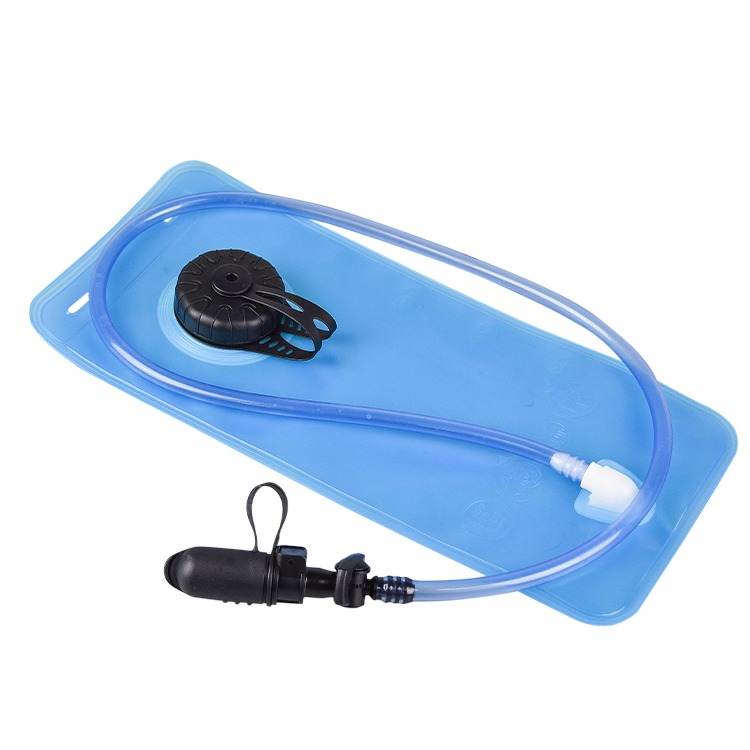Water bladder is a flexible and durable form of hydration pack that allow people to easily carry and access water while on-the-go. Whether you’re going for a hike, bike ride, or camping trip, a water bladder is a convenient and efficient way to stay hydrated.
What is a Water Bladder?
A water bladder, also known as a hydration bladder or reservoir, is a flexible plastic container that is used for storing and dispensing liquids, primarily water. The most common type of water bladder is made from BPA-free, food-grade plastic that is safe for storing and drinking water. These bladders can vary in size, typically ranging from 1 to 3 liters, and can easily fit into backpacks, purses, or other types of bags.
How does a Water Bladder Work?
Water bladders have a simple design that allows them to hold and dispense water with ease. They have a wide opening at the top, similar to that of a dry bag, which allows for easy filling and cleaning. The bottom of the bladder has a hose that connects to a bite valve, allowing users to drink water without needing to stop and take out a water bottle. Some bladders also have a shut-off valve attached to the hose, which can be used to prevent accidental leaks.
To use a water bladder, you first need to fill it with water through the top opening. Once filled, the bladder can be placed inside a backpack or attached to the outside using straps. The user can then use the hose and bite valve to drink water when needed, without having to stop and take out a water bottle. This makes it a convenient and hands-free way to stay hydrated while on the move.
Benefits of Using a Water Bladder
There are several advantages to using a water bladder over traditional water bottles or canteens. Here are some of the key benefits:
1. Convenient and Hands-Free Hydration: As mentioned earlier, one of the main benefits of using a water bladder is that it allows for hands-free hydration. This is particularly useful for activities like hiking, where stopping to take out a water bottle can be inconvenient and disrupt your pace.
2. Space-Saving: Water bladders are designed to be compact and lightweight, making them a great choice for people who want to save space. They are also collapsible, so when not in use, they can be folded or rolled up, taking up even less space.
3. Better Water Distribution: Unlike traditional water bottles, water bladders distribute weight evenly across the back, making them more comfortable to carry. This is especially beneficial for long hikes or runs where weight distribution is crucial.
4. Hygienic: Water bladders come with a wide opening at the top, allowing for easy cleaning and drying. This ensures that your water bladder stays clean and free from bacteria growth.
5. Customizable: Many water bladders come with detachable hoses and bite valves, allowing users to customize their hydration pack to their liking. For example, some bite valves have on-off switches to prevent leaks or dust covers for added hygiene.
6. Versatile: While water bladders are primarily used for carrying water, they can also be used to carry other liquids, such as sports drinks or even wine. This makes them a versatile option for outdoor activities and events.
SIBO Company is a standardized modern enterprise in Jinjiang, Fujian. SIBO was established to research, manufacture, and sell camping, outdoor, and sports equipment. Our R&D team provides the latest ideas and designs every week, allowing us to promote new products. SIBO has its own automated production line for dust-free workshop water bottles, hydration tanks, and soft coolers. We focus on camping and sports products and have marketing experience in Japan, the United States, Europe, and other places.
Our water bags have the following functions:
Bite valve on/off switch
To prevent unnecessary leakage, the water bag biting valve has an on/off system, which can stop the water flow when not in use.
Quick connect valve
Some water reservoirs include drinking water pipes that are disconnected from the main body of the water bag, making it easier to replenish water. Simply press the button to disconnect the pipe and remove the reservoir from the backpack.
water bladder—FAQs Guide
Q: What materials are typically used in the construction of water bladder, and how do they impact durability and taste neutrality?
A: TPU,EVA,PEVA. All material pass all test PDA,REACH,VOM..etc EN71, FDA, LFGB, BPA, 6P, PAHS
Q: How do I prevent mold and bacteria growth in my water bladder, and are there cleaning kits or methods recommended for this purpose?
A: We have some cleaning tools,in Item #QQ039,QQ040,QQ042 and QQ015,washer kit,wahs it neat,easy of hand,peace of heart.
Q: Can water bladder be used in extreme weather conditions, and are there specific models designed for winter or summer use?
A: Yes, water bladder can be used in extreme weather conditions. There are specific models designed for winter and summer use. Winter models are designed to keep water from freezing, while summer models are designed to keep water cool.
Q: What is the typical weight of an empty water bladder, and how does this affect the overall weight of the backpack or hydration system?
A: The typical weight of an empty hydration bladder is between 4-6 ounces. This weight can add up quickly when combined with the weight of the backpack or hydration system, so it is important to consider the total weight of the system when selecting a hydration bladder.
Q: What is the production capacity of the factory for one month or one day?
A: Max 9,000pieces for 11H and around 300,000 pcs monthly production capability.
Q: Regarding the product payment
A: 30%TT deposti in advance,70% pending payment before shipment
Post time: Mar-11-2024



